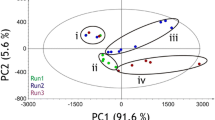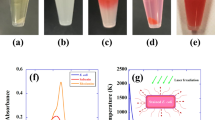Abstract.
A novel cell lysis system was developed that is based on laser-induced disruption of bacterial and yeast cells. It will find application as a rapid, efficient and clean sample preparation step in bioanalytical detection systems. Using E. coli as our model analyte, we optimized cell lysis with respect to optimal laser wavelength, lowest energy input requirements, RNA release from the cells, and potential protein damage. The optimized system was finally applied to the lysis of four additional microorganisms. All experiments were carried out with about 2000 cells per sample or less. Initially, lysis was determined by the detection of cell survival after laser treatment using standard microbiological techniques, (i.e., cells were grown on nutrient agar plates). Then, actual release of mRNA from the cells was proven. Wavelengths investigated ranged from 500 nm to 1550 nm. An average power of 100 mW for the lasers was shown to be sufficient to obtain cell lysis at wavelengths above 1000 nm, with optimal wavelengths between 1250 nm and 1550 nm. Since water absorbs energy at those wavelengths, it is assumed that laser exposure results in an instantaneous increase of the cell temperature, which causes rupture of the cell membrane. Second, damage to protein solutions treated under optimized laser-lysis conditions was also studied. Using a pure solution of horseradish peroxidase as a model protein, no loss in enzyme activity was observed. Thus, it was concluded that damage to intracellular proteins is unlikely. Third, RNA release was tested using an E. coli specific RNA biosensor. Release of RNA was not detected from untreated cells, but laser-treated E. coli cells displayed significant RNA release due to laser-induced cell lysis. Finally, lysis of M. luteus, B. subtilis, B. cereus, and S. cerevisiae were investigated under optimized conditions. In all cases, laser-induced lysis of the cells was confirmed by determination of cell survival. Hence, laser-induced cell lysis is an efficient procedure that can be used for sample preparation, without damage to macromolecules, in bioanalytical detection systems for microorganisms. Miniaturized lasers and miniaturized cell-lysis chambers will create a simple, field-usable cell lysis system and allow the application of laser-induced cell lysis in micro Total Analysis Systems.
Similar content being viewed by others
Author information
Authors and Affiliations
Additional information
Electronic Publication
Rights and permissions
About this article
Cite this article
Dhawan, M.D., Wise, F. & Baeumner, A.J. Development of a laser-induced cell lysis system. Anal Bioanal Chem 374, 421–426 (2002). https://doi.org/10.1007/s00216-002-1489-2
Received:
Revised:
Accepted:
Issue Date:
DOI: https://doi.org/10.1007/s00216-002-1489-2




